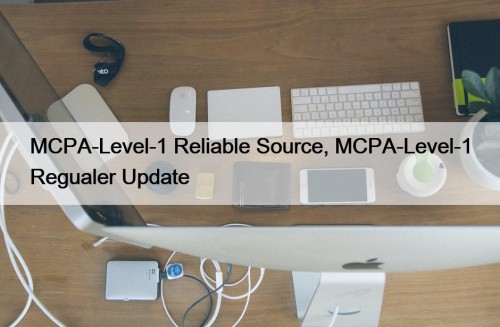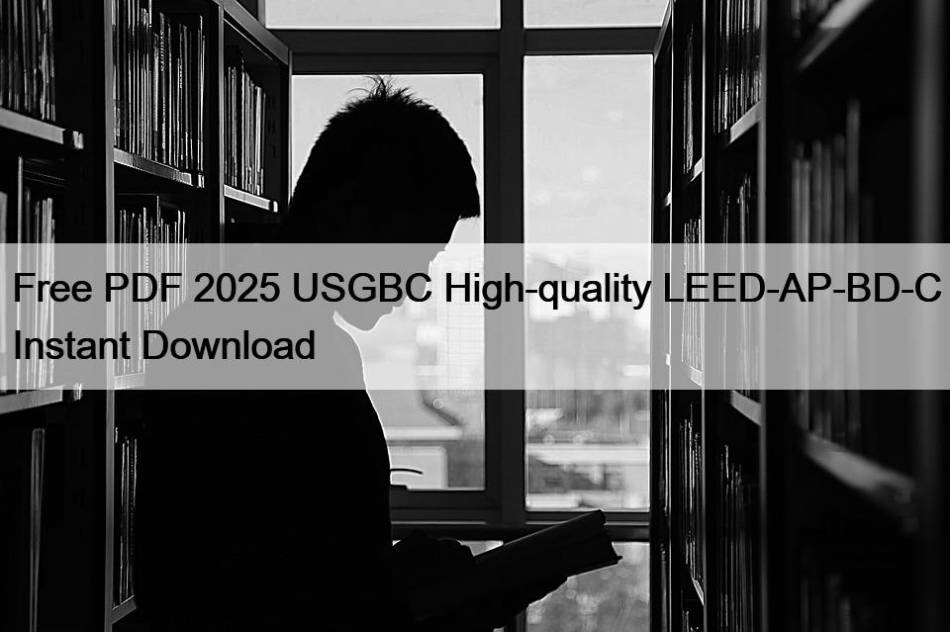Most Popular
 100% Pass Quiz Perfect Nutanix - Reliable NCS-Core Exam Pdf
100% Pass Quiz Perfect Nutanix - Reliable NCS-Core Exam Pdf
P.S. Free 2025 Nutanix NCS-Core dumps are available on Google ...
 MCPA-Level-1 Reliable Source, MCPA-Level-1 Regualer Update
MCPA-Level-1 Reliable Source, MCPA-Level-1 Regualer Update
Our MuleSoft MCPA-Level-1 latest exam preparation is valid. If you ...
 PEGACPSSA88V1 Cert Guide Free PDF | High Pass-Rate Latest PEGACPSSA88V1 Test Prep: Certified Pega Senior System Architect 8.8
PEGACPSSA88V1 Cert Guide Free PDF | High Pass-Rate Latest PEGACPSSA88V1 Test Prep: Certified Pega Senior System Architect 8.8
Therefore, it is indispensable to choose a trusted website for ...



Free PDF 2025 USGBC High-quality LEED-AP-BD-C Instant Download

DOWNLOAD the newest PDFVCE LEED-AP-BD-C PDF dumps from Cloud Storage for free: https://drive.google.com/open?id=1dgh-FB2FHAKOSGBLf7OTbnET9Oz5EywL
PDFVCE experts have also developed LEED AP Building Design + Construction (LEED AP BD+C) (LEED-AP-BD-C) test simulation software for you to assess and improve yourself. This is especially useful for intensive preparation and revision. It will provide you with an LEED AP Building Design + Construction (LEED AP BD+C) (LEED-AP-BD-C) exam environment and will give you real exam USGBC LEED-AP-BD-C questions.
USGBC LEED-AP-BD-C Exam Syllabus Topics:
| Topic | Details |
|---|---|
| Topic 1 |
|
| Topic 2 |
|
| Topic 3 |
|
| Topic 4 |
|
| Topic 5 |
|
| Topic 6 |
|
| Topic 7 |
|
| Topic 8 |
|
| Topic 9 |
|
>> LEED-AP-BD-C Instant Download <<
Reliable LEED-AP-BD-C Real Test - LEED-AP-BD-C Valid Dumps Questions
If you want to make your IT dream come true, you just need to choose the professional training materials. PDFVCE is a professional website to provide IT certification training materials. Our LEED-AP-BD-C exam training materials is the result of PDFVCE's experienced IT experts with constant exploration, practice and research for many years. After you purchase our LEED-AP-BD-C Dumps PDF training materials, we will provide one year free renewal service.
USGBC LEED AP Building Design + Construction (LEED AP BD+C) Sample Questions (Q21-Q26):
NEW QUESTION # 21
To achieve the Sustainable Sites Credit, Light Pollution Reduction, Option 1. BUG Rating Method, projects must demonstrate
- A. all luminaires meet acceptable fixture ratings for the project's Model Lighting Ordnance (MLO) lighting zone
- B. all luminaires are mounted at least three mounting heights from the lighting boundary
- C. all luminaires have full cutoff fixtures
- D. all luminaires have a minimum color temperature of 3500 K
Answer: A
Explanation:
Explanation
To achieve the Sustainable Sites Credit, Light Pollution Reduction, Option 1. BUG Rating Method, projects must demonstrate that all luminaires meet acceptable fixture ratings for the project's Model Lighting Ordnance (MLO) lighting zone. The MLO lighting zone is determined by the site-specific characteristics and the definitions provided in the IES/IDA MLO User Guide1. The fixture ratings are based on the backlight-uplight-glare (BUG) system, which measures the amount of light emitted in different directions by a luminaire, as defined in IES TM-15-11, Addendum A2. The maximum allowable ratings for each lighting zone are given in Table 1 of the credit language3. References: IES/IDA MLO User Guide; IES TM-15-11, Addendum A; Light pollution reduction
NEW QUESTION # 22
An owner has requested that the project team redesign a large office building. As part of the redesign, the owner would like to move the main entrance to the opposite side of the building. Achievement of which credit may be affected by the move?
- A. Location and Transportation Credit, High-Priority Site
- B. Location and Transportation Credit, LEED for Neighborhood Development Location
- C. Location and Transportation Credit, Surrounding Density and Diverse Uses
- D. Location and Transportation Credit, Sensitive Land Protection
Answer: C
Explanation:
Achievement of the Location and Transportation Credit, Surrounding Density and Diverse Uses may be affected by the move of the main entrance to the opposite side of the building. This is because the credit requires that the project be located within a minimum density area and within walking distance of diverse uses1. The walking distance is measured from a main functional entry of the project building to the diverse use entry1. If the main functional entry is moved, the distance to the diverse uses may change and affect the credit achievement. The other credits are not affected by the move of the main entrance, as they are based on the location of the project site, not the building entry. The Location and Transportation Credit, High-Priority Site rewards projects that are located on sites that are previously developed, infill, or adjacent to existing development2. The Location and Transportation Credit, Sensitive Land Protection rewards projects that are located on sites that do not contain sensitive land features such as prime farmland, wetlands, or habitats3. The Location and Transportation Credit, LEED for Neighborhood Development Location rewards projects that are located within the boundary of a LEED for Neighborhood Development certified plan4.
References:
*Surrounding density and diverse uses, p. 1
*High-priority site, p. 1
*Sensitive land protection, p. 1
*LEED for neighborhood development location, p. 1
NEW QUESTION # 23
Which of the following methods is the referenced standard for demonstrating compliance with Indoor Environmental Quality Prerequisite, Minimum Indoor Air Quality Performance?
- A. ASHRAE 90.1 - 2010
- B. ASHRAE 62.1 - 2010
- C. ASHRAE 62.2 - 2007
- D. ASHRAE 55 - 2010
Answer: B
Explanation:
The referenced standard for Indoor Environmental Quality (IEQ) Prerequisite: Minimum Indoor Air Quality (IAQ) Performance in LEED AP ID+C projects is ASHRAE 62.1 - 2010. ASHRAE 62.1 specifies ventilation rates and air quality requirements for acceptable indoor air quality in commercial buildings, establishing the minimum standards needed to maintain health and comfort. ASHRAE 62.2 (A) is relevant to low-rise residential buildings, ASHRAE 90.1 (B) covers energy standards, and ASHRAE 55 (C) relates to thermal comfort rather than air quality.
NEW QUESTION # 24
Which of the following could be considered diverted construction waste?
- A. Alternative daily cover
- B. Land-clearing debris
- C. Asphalt with aggregate
- D. Excavated soil
Answer: C
Explanation:
According to the LEED v4 Reference Guide for Building Design and Construction, diverted construction waste is defined as "materials that are diverted from disposal in landfills or incineration facilities and are instead reused, recycled, composted, or salvaged"1. Asphalt with aggregate is an example of a material that can be recycled and reused for paving or other applications. Excavated soil and land-clearing debris are excluded from the calculation of the total construction and demolition waste for the MR Credit Building Life-Cycle Impact Reduction1. Alternative daily cover is a material that is used to cover the surface of an active landfill at the end of each day to control odors, pests, and litter. It is not considered as diversion because it does not reduce the amount of waste sent to landfills2. Reference: MR Credit Building Life-Cycle Impact Reduction, LEED v4 Reference Guide for Building Design and Construction3142
NEW QUESTION # 25
The total land area within a 1/4 mi. (0.40 km) radius of a project boundary consists of 130 acres (53 hectares) and has a residential to nonresidential ratio of 60:40. Within this same total land area, there are 780 dwelling units and 1,600,000 ft2 (148 645 m2) of nonresidential building space. Given these parameters, what are the surrounding residential and nonresidential densities when attempting to achieve Location and Transportation Credit, Surrounding Density and Diverse Uses?
- A. 15 dwelling units per acre (36 dwelling units per hectare) and a FAR of 0.70
- B. 10 dwelling units per acre (24 dwelling units per hectare) and a Floor Area Ratio (FAR) of 0.47
- C. 10 dwelling units per acre (24 dwelling units per hectare) and a FAR of 0.70
- D. 13 dwelling units per acre (32 dwelling units per hectare) and a FAR of 0.47
Answer: D
Explanation:
The surrounding residential density is calculated by dividing the total number of dwelling units by the total residential land area. In this case, it would be 780 dwelling units divided by 60% of 130 acres, which equals approximately 13 dwelling units per acre (or 32 dwelling units per hectare).
The nonresidential density, or Floor Area Ratio (FAR), is calculated by dividing the total nonresidential building floor area by the total nonresidential land area. In this case, it would be 1,600,000 ft² divided by 40% of 130 acres, which equals a FAR of approximately 0.47.
These calculations are used when attempting to achieve the Location and Transportation Credit, Surrounding Density and Diverse Uses, under the LEED AP BD+C V4 rating system.
References:
* [LEED v4 BD+C Reference Guide]
NEW QUESTION # 26
......
LEED AP Building Design + Construction (LEED AP BD+C) (LEED-AP-BD-C) PDF dumps are the third and most convenient format of the USGBC LEED-AP-BD-C PDF questions prep material. This format is perfect for busy test takers who prefer to study for the LEED AP Building Design + Construction (LEED AP BD+C) (LEED-AP-BD-C) exam on the go. Questions bank in the PDFVCE USGBC LEED-AP-BD-C Pdf Dumps is accessible via all smart devices. We also update LEED AP Building Design + Construction (LEED AP BD+C) (LEED-AP-BD-C) PDF questions regularly to ensure they match with the new content of the LEED-AP-BD-C exam.
Reliable LEED-AP-BD-C Real Test: https://www.pdfvce.com/USGBC/LEED-AP-BD-C-exam-pdf-dumps.html
- Latest LEED-AP-BD-C Exam Cram 🔌 LEED-AP-BD-C Exam Simulations 🥙 LEED-AP-BD-C Visual Cert Exam 🦊 Easily obtain free download of ⏩ LEED-AP-BD-C ⏪ by searching on 「 www.actual4labs.com 」 📲LEED-AP-BD-C Latest Material
- Top LEED-AP-BD-C Instant Download | Professional Reliable LEED-AP-BD-C Real Test: LEED AP Building Design + Construction (LEED AP BD+C) 100% Pass 🥑 Go to website ▷ www.pdfvce.com ◁ open and search for ➡ LEED-AP-BD-C ️⬅️ to download for free 😰Reliable LEED-AP-BD-C Test Tutorial
- Clear the USGBC LEED-AP-BD-C Exam with www.prep4away.com 🛅 Search for “ LEED-AP-BD-C ” and obtain a free download on ⏩ www.prep4away.com ⏪ 🦝LEED-AP-BD-C Online Version
- LEED-AP-BD-C Latest Exam Online 🕙 Valid LEED-AP-BD-C Test Labs 💘 Pass4sure LEED-AP-BD-C Exam Prep 🔹 Open website 「 www.pdfvce.com 」 and search for { LEED-AP-BD-C } for free download 📘Downloadable LEED-AP-BD-C PDF
- Pass4sure LEED-AP-BD-C Exam Prep 🍉 LEED-AP-BD-C Latest Exam Online 🦔 LEED-AP-BD-C Latest Test Experience 🏇 Open { www.dumpsquestion.com } enter ▶ LEED-AP-BD-C ◀ and obtain a free download 📌LEED-AP-BD-C Visual Cert Exam
- Valid LEED-AP-BD-C Test Labs 🏙 LEED-AP-BD-C Online Version 🧊 Latest LEED-AP-BD-C Exam Practice 🌶 Search for { LEED-AP-BD-C } and easily obtain a free download on ➥ www.pdfvce.com 🡄 🐴Reliable LEED-AP-BD-C Test Tutorial
- Formats of www.exam4pdf.com USGBC LEED-AP-BD-C exam practice questions 🚝 Easily obtain free download of 【 LEED-AP-BD-C 】 by searching on ➤ www.exam4pdf.com ⮘ 🏁LEED-AP-BD-C Latest Exam Online
- LEED-AP-BD-C Exam Pass Guide 🌵 LEED-AP-BD-C Test Certification Cost 💯 LEED-AP-BD-C Study Test 🥤 Search for ☀ LEED-AP-BD-C ️☀️ on ▛ www.pdfvce.com ▟ immediately to obtain a free download 🎰LEED-AP-BD-C Latest Dumps Free
- Latest LEED-AP-BD-C Exam Practice 🧐 Pass4sure LEED-AP-BD-C Exam Prep 💋 Minimum LEED-AP-BD-C Pass Score 🤍 Immediately open ➠ www.examdiscuss.com 🠰 and search for ➠ LEED-AP-BD-C 🠰 to obtain a free download 🥭Latest LEED-AP-BD-C Exam Practice
- LEED-AP-BD-C Study Test 🍕 Pass4sure LEED-AP-BD-C Exam Prep 😶 LEED-AP-BD-C Latest Material 💧 Search for { LEED-AP-BD-C } and download exam materials for free through ✔ www.pdfvce.com ️✔️ 📉LEED-AP-BD-C Official Cert Guide
- Identify and Strengthen Your Weaknesses with USGBC LEED-AP-BD-C Practice Tests (Desktop and Web-Based) 🥌 Open website ➥ www.testkingpdf.com 🡄 and search for 「 LEED-AP-BD-C 」 for free download 🥛LEED-AP-BD-C Latest Material
- LEED-AP-BD-C Exam Questions
- 赫拉天堂.官網.com 5000n-19.duckart.pro 5000n-21.duckart.pro 皇池天堂.官網.com 5000n-21.duckart.pro 漢頓天堂.官網.com zzhan.cn bbs.xiaoshanxin.com 123.59.83.120:8080 神炬天堂.官網.com
P.S. Free & New LEED-AP-BD-C dumps are available on Google Drive shared by PDFVCE: https://drive.google.com/open?id=1dgh-FB2FHAKOSGBLf7OTbnET9Oz5EywL
Tags: LEED-AP-BD-C Instant Download, Reliable LEED-AP-BD-C Real Test, LEED-AP-BD-C Valid Dumps Questions, Valid LEED-AP-BD-C Dumps Demo, LEED-AP-BD-C Exam Pattern